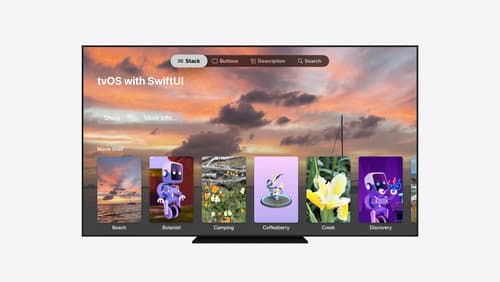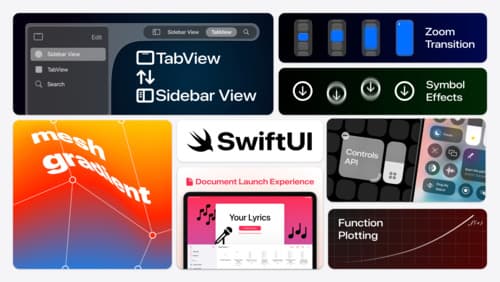swiftui uitableviewcell ios 15
Asked on 2024-07-29
1 search
To work with UITableViewCell in iOS 15 using SwiftUI, you can leverage the interoperability between SwiftUI and UIKit. While SwiftUI itself does not have a direct equivalent to UITableViewCell, you can integrate SwiftUI views within a UITableView using UIHostingController.
Here are some relevant sessions from WWDC that might help you understand how to integrate SwiftUI with UIKit and handle dynamic layouts:
- Get started with Dynamic Type: This session discusses how to achieve dynamic layouts in SwiftUI, which can be useful when designing cells that need to adapt to different text sizes.
- What’s new in UIKit: This session covers the interoperability of SwiftUI and UIKit, including how to use SwiftUI animations with UIKit views.
- Enhance your UI animations and transitions: This session goes into detail about fluid transitions and how they work with view controller lifecycle and appearance callbacks in UIKit, which can be useful when dealing with
UITableViewCell.
For a more specific example, you can refer to the "Dynamic layouts" chapter in the "Get started with Dynamic Type" session, which starts at 06:00. This will give you insights into creating dynamic layouts that adapt to different text sizes, which is crucial for creating accessible and responsive table view cells.
If you need more detailed guidance on integrating SwiftUI views within a UITableView, you might want to look into the "SwiftUI animations in UIKit" chapter from the "What’s new in UIKit" session, starting at 03:35. This will help you understand how to animate and manage SwiftUI views within a UIKit context.

Get started with Dynamic Type
Dynamic Type lets people choose their preferred text size across the system and all of their apps. To help you get started supporting Dynamic Type, we’ll cover the fundamentals: How it works, how to find issues with scaling text in your app, and how to take practical steps using SwiftUI and UIKit to create a great Dynamic Type experience. We’ll also show how you can best use the Large Content Viewer to make navigation controls accessible to everyone.

Migrate your TVML app to SwiftUI
SwiftUI helps you build great apps on all Apple platforms and is the preferred toolkit for bringing your content into the living room with tvOS 18. Learn how to use SwiftUI to create familiar layouts and controls from TVMLKit, and get tips and best practices.

What’s new in SwiftUI
Learn how you can use SwiftUI to build great apps for any Apple platform. Explore a fresh new look and feel for tabs and documents on iPadOS. Improve your window management with new windowing APIs, and gain more control over immersive spaces and volumes in your visionOS apps. We’ll also take you through other exciting refinements that help you make expressive charts, customize and layout text, and so much more.
